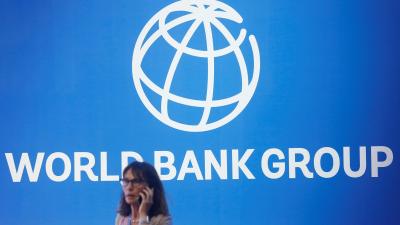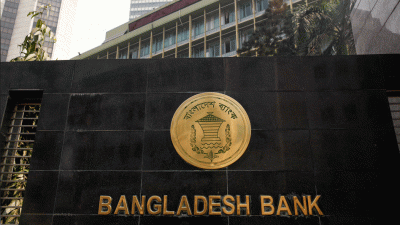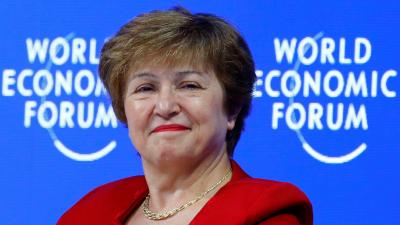 Developing Asia will maintain strong but moderating growth over 2019 and 2020, as supportive domestic demand counteracts an environment of global trade tensions, according to a new Asian Development Bank (ADB) report released on Thursday (Jul 18).
Developing Asia will maintain strong but moderating growth over 2019 and 2020, as supportive domestic demand counteracts an environment of global trade tensions, according to a new Asian Development Bank (ADB) report released on Thursday (Jul 18).
In a supplement to its Asian Development Outlook (ADO), ADB maintains growth forecasts for developing Asia at 5.7 percent in 2019 and 5.6 percent in 2020-unchanged from its April forecast, BSS reported.
These growth rates are slightly down from developing Asia’s 5.9 percent growth in 2018.
Excluding the newly industrialised economies of Hong Kong, China, the Republic of Korea, Singapore, Taipei and China, the regional growth outlook has been revised down from 6.2 percent to 6.1 percent in 2019 and will maintain the rate in 2020.
Elsewhere in South Asia, preliminary official estimates of GDP growth surpassed ADO 2019 forecasts for FY2019 in Bangladesh (ended 30 June 2019) and Nepal (ended 16 July 2019). Growth in Bangladesh accelerated from 7.9 percent in FY2018 to 8.1 percent in FY2019 with faster growth in industry and services. Investment rose from 31.2 percent of GDP in FY2018 to 31.6 percent in FY2019.
The report said deepening trade tension between the People’s Republic of China (PRC) and the United States (US) remains the largest downside risk to this outlook, despite an apparent truce in late June that could allow trade negotiations between the two countries to resume.
“Even as the trade conflict continues, the region is set to maintain strong but moderating growth,” said ADB Chief Economist Yasuyuki Sawada.
“However, until the world’s two largest economies reach agreement, uncertainty will continue to weigh on the regional outlook,” added the ADB official.
The growth outlook for East Asia in 2019 has been revised down to 5.6 percent because of slower than expected activity in the Republic of Korea. The subregion’s growth outlook of 5.5 percent for 2020 is unchanged from April.
Growth for the sub-region’s largest economy, the PRC, is also unchanged, with forecasts of 6.3 percent in 2019 and 6.1 percent in 2020, as policy support offsets softening growth in domestic and external demand.
In South Asia, the economic outlook is robust, with growth projected at 6.6 percent in 2019 and 6.7 percent in 2020, albeit lower than forecast in April.
The growth outlook for India has been cut to 7.0 percent in 2019 and 7.2 percent in 2020 because the fiscal 2018 outturn fell short.
The outlook for Southeast Asia has been downgraded slightly to 4.8 percent in 2019 and 4.9 percent in 2020 due to the trade impasse and a slowdown in the electronics cycle.
In Central Asia, the growth outlook for 2019 has been revised up to 4.3 percent on account of an improved outlook for Kazakhstan.
Central Asia’s growth outlook of 4.2 percent for 2020 is unchanged from April. The growth outlook in the Pacific-3.5 percent in 2019 and 3.2 percent in 2020-is unchanged, as the sub-region continues to rebound from the effects of Cyclone Gita and an earthquake in Papua New Guinea, the sub-region’s largest economy.
The major industrial economies have had slight revisions to their growth forecasts, with the US revised up to 2.6 percent for 2019 and the Euro area revised down to 1.3 percent. The growth outlook for Japan is unchanged at 0.8 percent in 2019 and 0.6 percent in 2020.
Developing Asia’s inflation projections were revised up from 2.5 percent to 2.6 percent for both 2019 and 2020, reflecting higher oil prices and various domestic factors, such as the continuing outbreak of African swine fever in several Asian economies, which is expected to drive up pork prices in the PRC.
 Business
Business
41268 hour(s) 32 minute(s) ago ;
Morning 07:26 ; Wednesday ; Jul 02, 2025
ADB report foresees Asia to maintain moderating growth
Send
Bangla Tribune Desk
Published : 06:00, Jul 19, 2019 | Updated : 06:00, Jul 19, 2019
Published : 06:00, Jul 19, 2019 | Updated : 06:00, Jul 19, 2019
0 ...0 ...
/zmi/
Topics: Top Stories
- KOICA donates medical supplies to BSMMU
- 5 more flights to take back British nationals to London
- Covid19: Rajarbagh, Mohammadpur worst affected
- Momen joins UN solidarity song over COVID-19 combat
- Covid-19: OIC to hold special meeting
- WFP begins food distribution in Cox’s Bazar
- WFP begins food distribution in Cox’s Bazar
- 290 return home to Australia
- Third charter flight for US citizens to return home
- Dhaka proposes to postpone D8 Summit
Unauthorized use of news, image, information, etc published by Bangla Tribune is punishable by copyright law. Appropriate legal steps will be taken by the management against any person or body that infringes those laws.
Bangla Tribune is one of the most revered online newspapers in Bangladesh, due to its reputation of neutral coverage and incisive analysis.
F R Tower, 8/C Panthapath, Shukrabad, Dhaka-1207 | Phone: 58151324; 58151326, Fax: 58151329 | Mob: 01730794527, 01730794528






